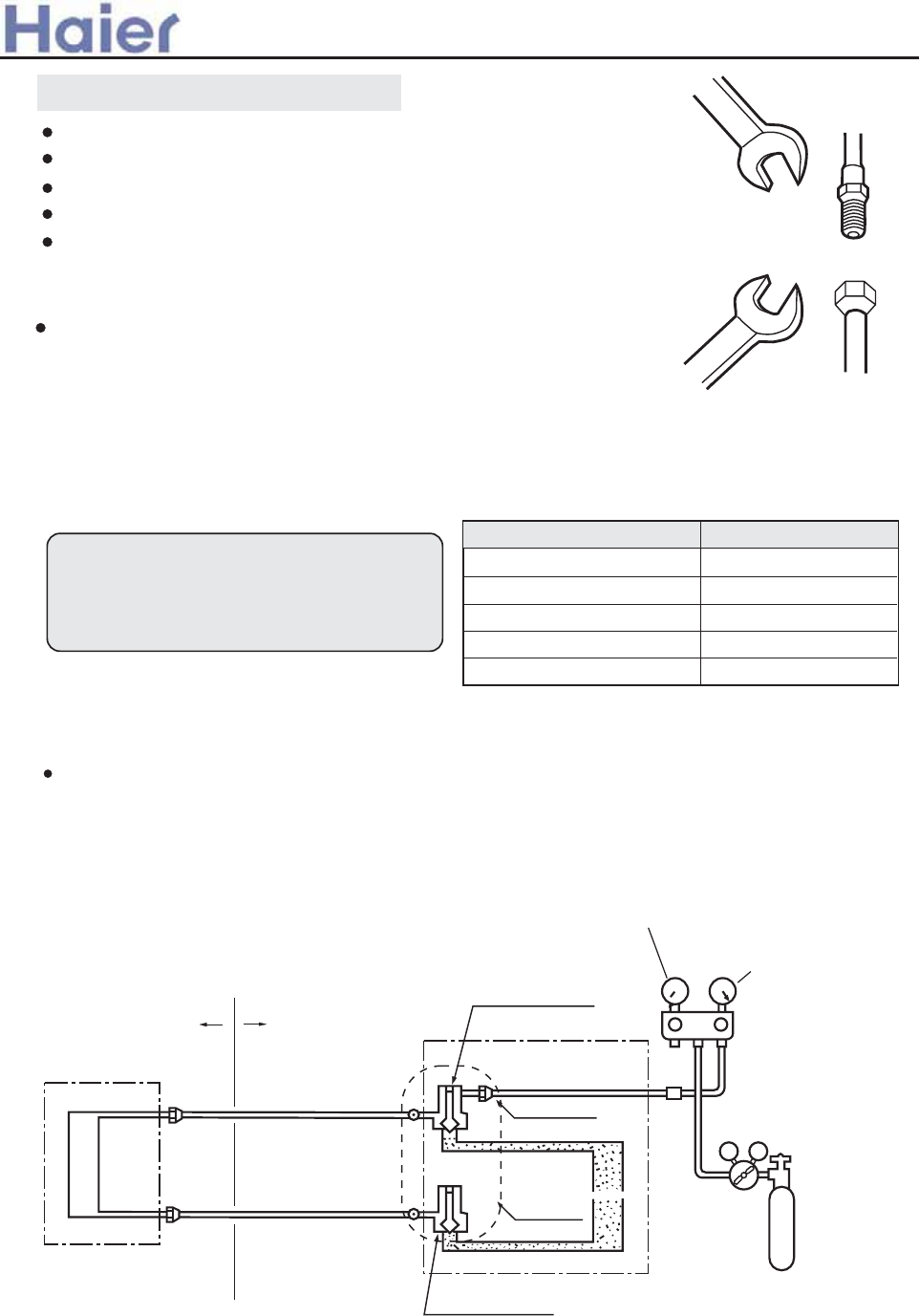
97.2-118.6N
.
m
Precautions for refrigerant piping
Do not twist or crush piping.
Be sure that no dust is mixed in piping.
Bend piping with as wide angle as possible.
Keep insulating both gas and liquid piping.
Check flare-connected area for gas leakage.
Connecting method (indoor unit)
Apply refrigerant oil at half union as large and flare nut.
To bend a pipe, give the roundness as possible not to crush
the pipe.
When connecting pipe, hold the pipe centre to centre then
screw nut on by hand, refer to Fig.
Be careful not to let foreign matters, such as sands enter
the pipe.
Piping connection
Forced fastening without centering
may damage the threads and cause
a gas leakage.
Pipe dia
Fastening torque
Liquid pipe 6.35mm
Gas pipe 15.88mm
Liquid pipe 9.52mm
Gas pipe 19.05mm
14.2-17.2N
.
m
61.8-75.4N
.
m
32.7-39.9N
.
m
Gas pipe 12.7mm
49.5-60.3N
.
m
After finishing connection of refrigerant pipe, it shall perform air tightness test.
The air tightness test adopts nitrogen tank to give pressure according to the pipe connection mode as
the following figure shown.
The gas and liquid valve are all in close state. In order to prevent the nitrogen entering the circulation
system of outdoor unit, tighten the valve rod before giving pressure (both gas and liquid valve rods).
Outdoor
Completely tightened
Completely tightened
Flare part
Outdoor units
Mainhole
Discharging valve
3-way valve totally closed
(Gas side)
Low pressure gauge
High pressure gauge
Meter separator
Dropping valve
2-way valve totally closed
(Liquid side)
Nitrogen tank
VL
VH
Indoor units
Indoor
Flare part
First step: 0.3MPa (3.0kg/cm
2
g) pressurize over 3 minutes.
Second step: 1.5Mpa (15kg/cm
2
g) pressurize over 3 minutes. Large leakage will be found.
Third step: 3.0 MPa (30kg/cm
2
g) pressurize about 24 hours. Little leakage will be found.
Air discharging method
>a__WcU[S^ <[c >a`V[e[a`Wc
-123-


















